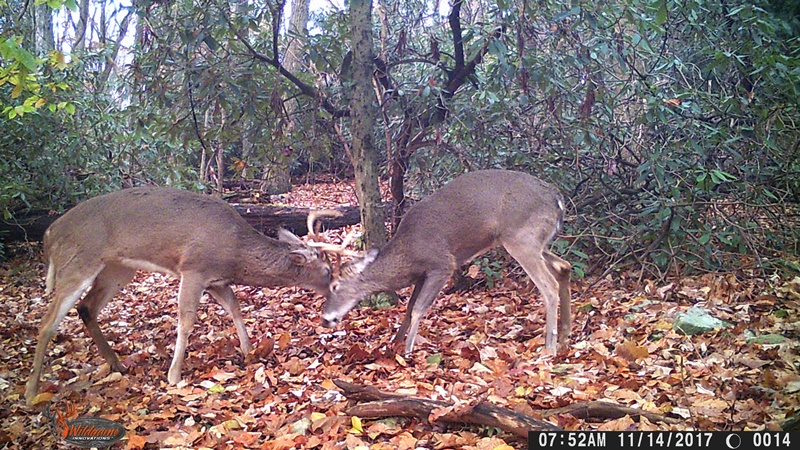Mariton: We Have Coyotes Too
by Tim Burris, Preserve Manager. Photos by the “trail camera”
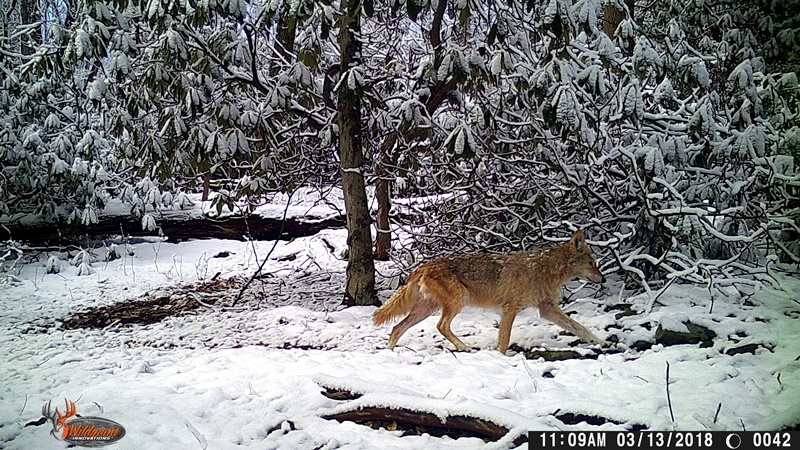
Game on Dan and Alec! However, I’ve seen our colleague’s (Lee Shull’s) hand and he has us soundly beat.
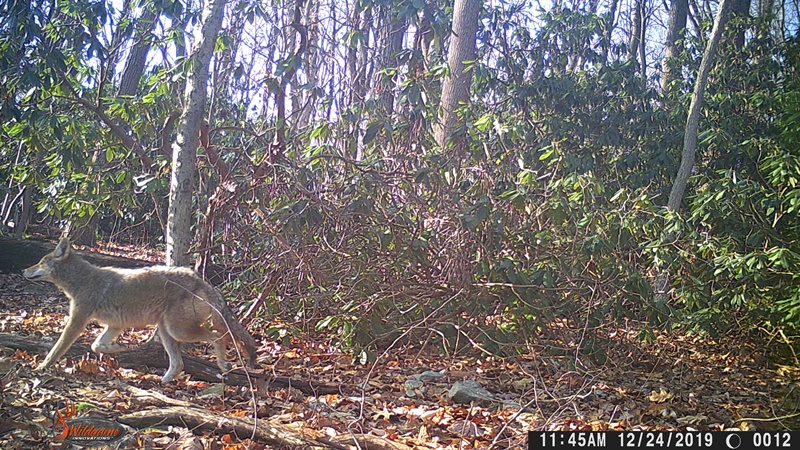
I mentioned in the Red Fox field note that Coyotes can limit Red Fox numbers. When coyotes move into an area, they generally kill all the Red Foxes to eliminate competition for food. There is interesting research from Madison, Wisconsin. In Madison, they found coyotes gravitated to the big open spaces of preserved land, parks, and wilder corridors provided by creeks, trails and rail lines. Foxes tended to live in the urban areas close to people, sometimes right in their yards and under decks. Coyotes would sometimes venture into the neighborhoods in hopes of catching a fox kit, but more often they pilfered the food scraps that the adult foxes had placed around the den for the young. I might call that Eagle smart.
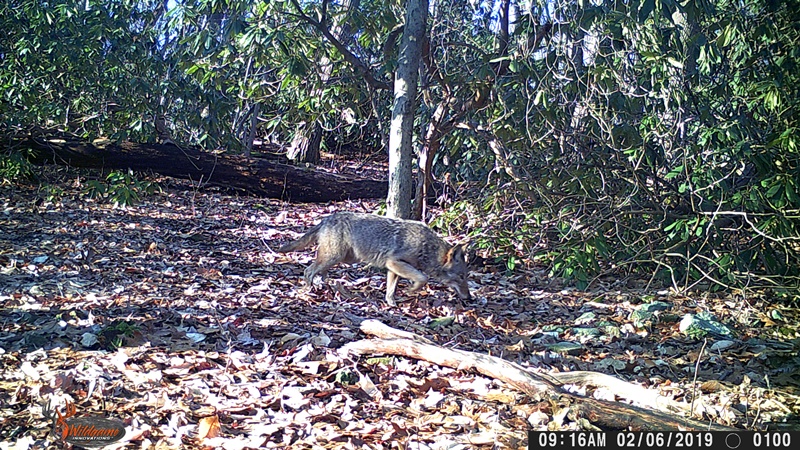
The photos reveal a few different coyotes at Mariton.
While I have lots of coyote photos on the trail camera, I don’t think they live at Mariton. Imagine a daisy flower with the petals radiating from the inner disk. This is just my gut speaking, but I think that Mariton is one of those petals for coyotes. They have their home (the flower disk) and they hunt for a while in a given area (one of the petals). When they have taken advantage of easy prey they move on to another petal, and keep moving around. In this way they wouldn’t over harvest one area, and prey populations would have time to rebound before they returned.
One reason for my gut feeling is that I see a lot of Red Foxes on the trail camera. I think that if Coyotes lived full time at Mariton, they would eliminate the foxes. Years of photos on the camera provide another reason for my thinking. Coyotes may appear regularly on the camera for several weeks, and then they disappear. It may be months before I capture any coyotes on the camera again. Check the time stamps on the next three photos. Same trail, same day.
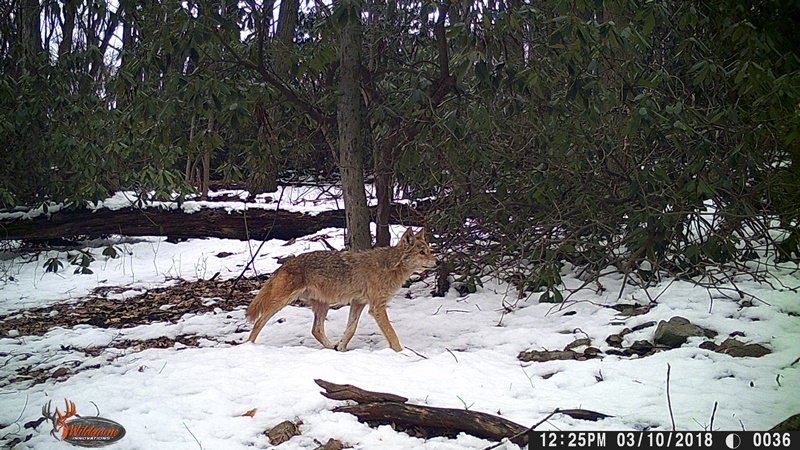
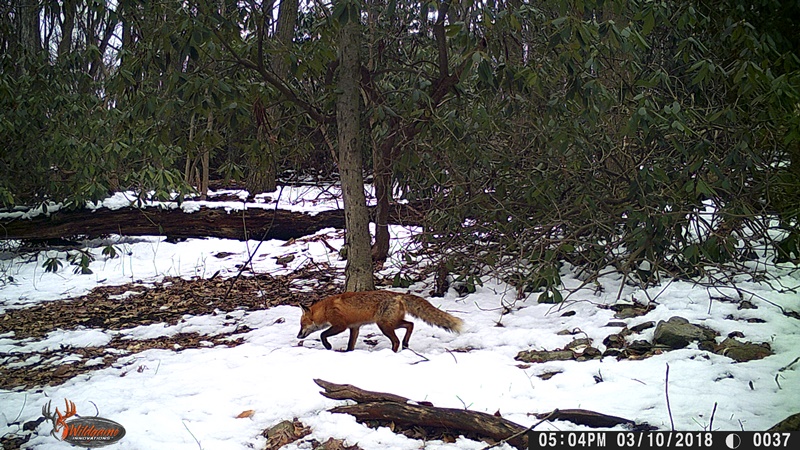
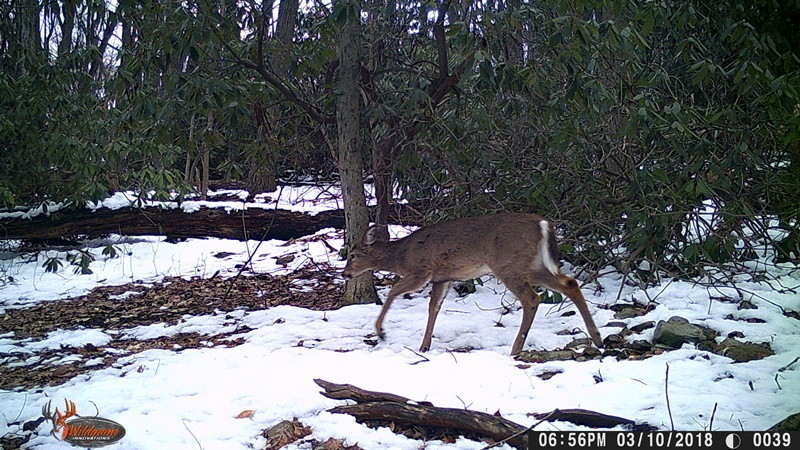
The fox and deer don’t seem too concerned that a coyote traveled the same trail. Trust me, they are fully aware that it did, and if they were concerned they wouldn’t be on the trail.
In Pennsylvania, fawn predation is evenly split between Coyotes, Black Bears and Bobcats. Coyotes get most of the blame from deer hunters. There have been a few studies that show that increasing the harvest of Coyotes increases their litter size, so it doesn’t actually reduce the Coyote population. Either way, coyote predation on fawns doesn’t seem to greatly affect deer populations. (If it does, managers have tools to compensate for predation. So far, Pennsylvania’s deer managers haven’t needed those tools.) On the other hand, hunting and trapping can make coyotes more wary of humans, and that reduces negative interactions with people. As Dan warned, keep you pets on leash!
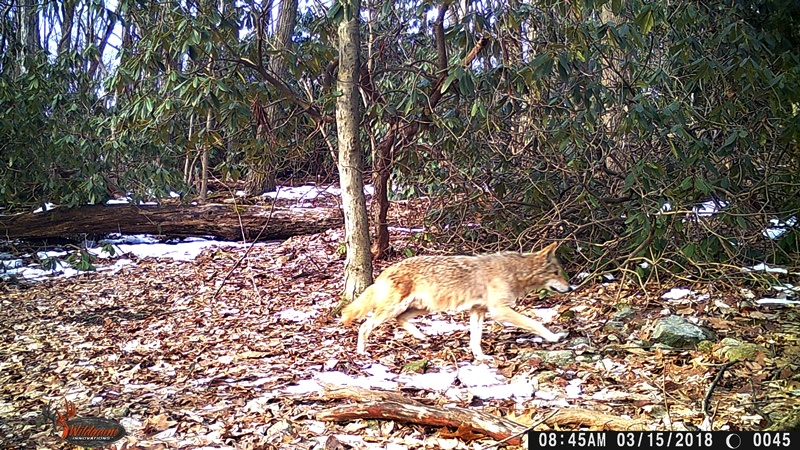
Like its canid cousin, Coyotes are adaptable and utilize a variety of food sources. Maureen and I have heard coyotes sound off during the summer when we sleep with windows open. To me, it is a raucous chorus full of joy and bravado and “street taunts”.
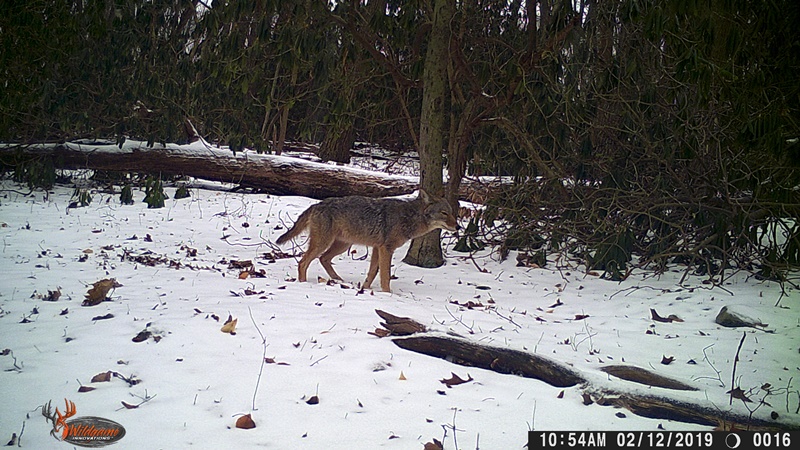
While I have coyote photos from this year, so far they have all been blurred by fog or movement. This is a great game trail at Mariton. I’ve photo captured Turkeys, Skunks, Opossums, Raccoons, and lots of deer.
I don’t know if this really raises the stakes, but it is a pretty neat photo capture for Alec to try to beat:
